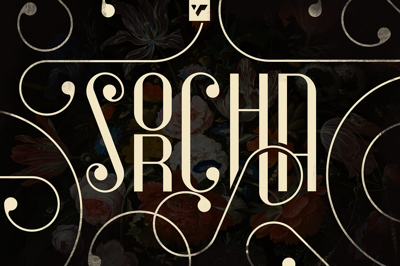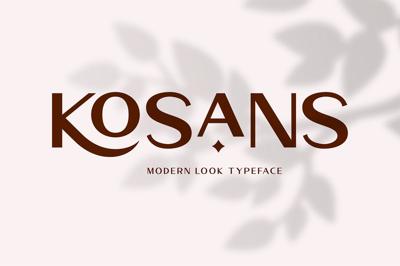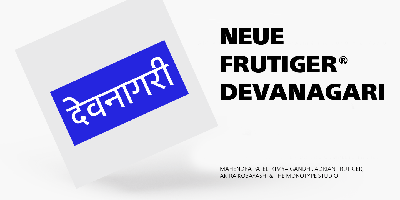How to Pair Fonts Like a Pro: A Complete Guide
How to Pair Fonts Like a Pro: A Complete Guide
Font pairing represents one of the most challenging yet crucial skills in typography design. The difference between amateur and professional design often lies not in individual font choices, but in how different typefaces work together harmoniously. Mastering font pairing transforms ordinary designs into sophisticated visual communications that capture attention, enhance readability, and strengthen brand identity. This comprehensive guide reveals the secrets behind successful font combinations and provides actionable strategies for creating typography that elevates your design work to professional standards.
Understanding the Fundamentals of Font Pairing
Successful font pairing begins with understanding the psychological and visual relationships between different typefaces. Each font carries distinct personality traits, historical associations, and structural characteristics that either complement or conflict with other fonts. Professional designers develop intuitive understanding of these relationships through practice and systematic analysis.
The Science Behind Font Harmony: Typography pairing works similarly to musical harmony, where different elements combine to create pleasing compositions. Fonts with complementary characteristics enhance each other's strengths while covering individual weaknesses. Contrasting fonts create visual interest through controlled tension, while similar fonts provide cohesive unity.
Visual weight, character proportions, and stylistic origins influence how fonts interact with each other. Fonts sharing similar x-heights often pair well because they create consistent visual baseline relationships. However, too much similarity can create boring, monotonous designs that lack visual hierarchy.
Psychological Impact of Font Combinations: Different font pairings trigger distinct psychological responses that influence reader perception and engagement. Serif-sans serif combinations often communicate balanced professionalism, while script-sans pairings suggest creative approachability. Understanding these psychological triggers helps designers choose combinations that support their communication objectives.
The Classic Serif and Sans-Serif Combination
The most reliable and versatile font pairing strategy combines serif and sans-serif typefaces, creating designs that balance tradition with modernity. This time-tested approach provides natural contrast while maintaining professional credibility across various applications and industries.
Why Serif-Sans Combinations Work: Serif fonts provide classical authority and reading comfort, particularly in longer text applications. Sans-serif fonts offer modern clarity and screen optimization. Together, they create typography systems that work effectively across both print and digital media while appealing to diverse audience preferences.
Professional Implementation Strategies: Use serif fonts for headlines when seeking to establish authority and credibility, paired with sans-serif body text that ensures optimal digital readability. This combination works exceptionally well for professional services, publications, and brands requiring trustworthy positioning.
Alternatively, employ sans-serif headlines for modern impact while using serif body text for comfortable extended reading. This approach suits editorial design, academic publications, and brands balancing innovation with scholarly authority.
Successful Serif-Sans Pairings: Times New Roman headlines with Open Sans body text create reliable professional combinations suitable for corporate communications and formal documents. This pairing provides authority without intimidation while ensuring excellent readability across platforms.
Playfair Display headlines paired with Lato body text combine elegance with warmth, perfect for luxury brands, lifestyle publications, and creative industries requiring sophisticated yet approachable communication.
Many free font collections offer pre-tested serif-sans combinations that eliminate guesswork while ensuring professional results. Google Fonts particularly excels in providing harmonious pairings with detailed usage recommendations.
Mastering Contrast Through Visual Weight
Visual weight creates hierarchy and interest in typography through strategic contrast between bold and light typefaces. Understanding how to balance different font weights prevents overwhelming designs while ensuring important information receives appropriate emphasis.
Weight Contrast Principles: Effective weight contrast requires sufficient difference between paired fonts to create clear hierarchy without jarring visual conflicts. Pair ultra-light fonts with bold alternatives, or medium weights with extra-bold options, avoiding subtle weight differences that create uncertain hierarchy.
Strategic Weight Distribution: Headlines typically benefit from heavier weights that command attention and establish information priority. Body text requires medium weights that balance readability with visual presence. Accent text can use various weights depending on specific emphasis requirements.
Professional Weight Pairing Examples: Montserrat Black headlines with Montserrat Light body text create dramatic contrast within a single font family, ensuring perfect stylistic harmony while providing clear hierarchy. This mono-family approach works excellently for modern brands seeking consistency with impact.
Roboto Bold headlines paired with Source Sans Pro Regular body text combine different families while maintaining compatible geometric characteristics. This approach provides subtle personality differences while ensuring technical compatibility across platforms.
Geographic and Historical Font Pairing
Fonts developed in similar historical periods or geographical regions often share design characteristics that create natural pairing harmony. Understanding these connections helps designers create combinations that feel historically appropriate and culturally coherent.
Historical Period Pairings: Art Deco fonts pair beautifully with geometric sans-serifs from the same era, creating designs that capture the period's modernist spirit while maintaining visual consistency. These combinations work exceptionally well for brands seeking vintage sophistication.
Mid-century modern fonts combine effectively with clean, rational typefaces that reflect the period's design philosophy. These pairings appeal to audiences appreciating minimalist aesthetics and functional beauty.
Cultural Font Relationships: European typography traditions emphasize elegance and refinement, making fonts from this tradition pair well together. American typography often prioritizes functionality and accessibility, creating different but equally valid pairing relationships.
Understanding these cultural influences helps designers choose combinations that resonate with target audiences while respecting typographic heritage and traditions.
The Power of Font Family Pairing
Using multiple weights and styles within a single font family represents the safest and most harmonious pairing approach. This strategy eliminates style conflicts while providing comprehensive design flexibility through varied weights, widths, and styles.
Single Family Advantages: Font families ensure perfect stylistic consistency because all variations share identical design DNA. Character proportions, spacing relationships, and aesthetic details remain consistent across all weights and styles, creating seamless visual harmony.
Maximizing Family Potential: Modern free font families often include extensive weight ranges that rival premium alternatives. Families like Inter offer variable font technology that provides unlimited weight variations within single files, maximizing creative possibilities while minimizing technical complexity.
Family Pairing Strategies: Use the heaviest family weight for headlines, medium weights for subheadings, and regular weights for body text. This creates clear hierarchy while maintaining perfect stylistic unity throughout your design.
Combine regular and italic styles within families to add emphasis and variety without introducing conflicting typeface personalities. Italic styles provide elegant emphasis that maintains family harmony.
Display Font Pairing: Making Statement Typography Work
Display fonts create distinctive brand personalities but require careful pairing to avoid overwhelming designs or compromising readability. Understanding how to balance display fonts with neutral partners ensures impact without sacrificing functionality.
Display Font Pairing Rules: Always pair distinctive display fonts with neutral, highly readable fonts for body text. The display font provides personality while the neutral font ensures content accessibility and professional presentation.
Personality Balance Strategies: Strong display fonts require understated partners that won't compete for attention. Script display fonts pair well with clean sans-serifs, while geometric display fonts work effectively with humanist alternatives.
Professional Display Combinations: Space Grotesk headlines with Inter body text create contemporary pairings that balance character with functionality. This combination appeals to modern brands seeking distinctive identity without sacrificing usability.
Custom display fonts paired with established free font body options provide unique branding while controlling costs. This approach allows creative expression in headlines while ensuring reliable performance in content applications.
Cultural Sensitivity in Global Font Pairing
International brands require font pairings that work across different cultures and writing systems. Understanding cultural typography preferences prevents communication barriers while ensuring respectful global brand presentation.
Cross-Cultural Considerations: Western serif-sans combinations may appear inappropriate in cultures favoring different typographic traditions. Research target culture preferences before finalizing international font pairings to ensure positive reception.
Multilingual Pairing Challenges: Fonts supporting multiple writing systems often compromise individual script optimization for overall consistency. Balance comprehensive language support with script-specific quality when choosing fonts for multilingual applications.
Global Brand Solutions: Choose free font families with extensive Unicode support that maintain quality across different writing systems. Google Fonts offers numerous options specifically designed for multilingual applications with consistent cross-script performance.
Technical Considerations for Professional Pairing
Successful font pairing extends beyond aesthetic decisions to include technical requirements that ensure consistent performance across different platforms, devices, and applications.
Web Performance Optimization: Limit font file loading to minimize page loading times while maintaining design effectiveness. Strategic font pairing reduces file requirements while maximizing visual impact through efficient resource utilization.
Cross-Platform Consistency: Test font pairings across different operating systems and browsers to ensure consistent rendering. Some font combinations work beautifully on specific platforms but fail on others due to rendering differences.
Responsive Design Compatibility: Choose font pairings that maintain effectiveness across different screen sizes and resolutions. Mobile-first design requires font combinations that remain readable and attractive on small screens.
Creating Custom Pairing Systems
Developing systematic approaches to font pairing eliminates guesswork while ensuring consistent results across different projects and team members. Professional design systems include font pairing guidelines that streamline decision-making processes.
Systematic Pairing Approaches: Establish primary font combinations for different content types, creating templates that ensure consistency while saving decision-making time. Document successful pairings for future reference and team coordination.
Brand-Specific Pairing Rules: Develop font pairing guidelines specific to brand personality and target audience characteristics. These guidelines help maintain brand consistency while providing flexibility for different application requirements.
Testing and Refinement: Regularly test font pairings with actual users to validate aesthetic decisions and readability assumptions. User feedback reveals pairing problems that designers might miss due to design familiarity.
Troubleshooting Common Pairing Problems
Even experienced designers encounter font pairing challenges that require systematic problem-solving approaches. Understanding common pairing mistakes helps identify and resolve issues quickly.
Identifying Pairing Conflicts: Visual competition between fonts creates hierarchy confusion that undermines communication effectiveness. When fonts fight for attention rather than supporting each other, reconsider weight relationships and stylistic compatibility.
Readability Issues: Beautiful font combinations that sacrifice readability fail their primary communication purpose. Always prioritize content accessibility over aesthetic preferences, particularly for body text applications.
Brand Appropriateness: Font pairings must align with brand personality and audience expectations. Sophisticated combinations inappropriate for casual brands, and playful pairings unsuitable for professional services, damage brand credibility.
Future-Proofing Your Font Pairing Skills
Typography trends evolve continuously, but fundamental pairing principles remain constant. Understanding these underlying principles ensures pairing skills remain relevant despite changing stylistic preferences.
Emerging Pairing Trends: Variable fonts create new pairing possibilities by allowing smooth transitions between weights and styles within single typefaces. Understanding variable font capabilities opens creative opportunities while simplifying technical implementation.
Sustainable Pairing Practices: Choose free font pairings that provide long-term value without licensing restrictions that might limit future applications. Open-source fonts offer sustainable solutions that grow with brand development.
Conclusion: Mastering the Art of Professional Font Pairing
Font pairing mastery transforms good designs into exceptional visual communications that engage audiences and achieve business objectives. The strategies outlined in this guide provide systematic approaches for creating harmonious typography that enhances rather than distracts from your message.
Remember that successful font pairing serves content and communication goals rather than purely aesthetic objectives. The most beautiful combinations mean nothing if they fail to enhance readability and user experience.
Start practicing these pairing principles with free font options that provide professional quality without financial barriers. Experimentation and systematic analysis will develop your pairing intuition while building confidence in typography decisions.
Professional font pairing skills develop through consistent practice and thoughtful analysis of successful combinations. Study typography in brands you admire, analyze what makes their pairings effective, and apply these insights to your own work.
The investment in mastering font pairing pays dividends throughout your design career, enabling you to create more sophisticated and effective visual communications that set your work apart in competitive markets.





